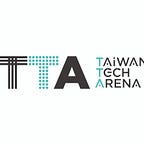Miniwiz: The Company Changing the Way the World Sees Waste
Miniwiz might not be a company that you have heard of directly, but there is a good to fair chance that you have seen their work on display throughout Asia. Originating in Taipei, Taiwan, Miniwiz was the brainchild of Arthur Huang and Jarvis Liu as a means to bridge the gap between recycling and its feasible applications. Since their company began in 2005, Miniwiz has tested the boundaries of recycled goods in the forms of furniture, fixtures, and even eyewear. It has even caught the attention of several larger organizations around the globe from Nike to National Geographic and the Jackie Chan Creative and Cultural Park.
“We started out as a sustainable energy company searching for ways and designs to solve the global energy issue.” — Tan Szue Hann
“We started out as a sustainable energy company searching for ways and designs to solve the global energy issue,” says Managing Director and Architect for Miniwiz Tan Szue Hann. “Because of this, our focus has been on turning existing materials into new materials.”
Most people who have heard the term “upcycling” (if ever) would likely think about simple DIY projects like turning lightbulbs into flower pots or giant spools into bookshelves. What Miniwiz does, however, is on a whole other level. Their products are all professionally made, sleek, artistic, and have a beautiful aesthetic. “Currently, many of our products are being loaned out at the moment, but on a good day, you would be seeing (in our office) cups, bricks, stationery holders, almost anything. These are all just demonstrations for what you can do with waste,” says Hann.
Household items and furniture are just the tip of the iceberg, though. Miniwiz has helmed several major projects such as the interior for Nike Labs in nine different locations across the globe and the massive 37-story Pacific Department Store in Chengdu China.
“We’re currently just B2B” says Hann, “we’re not yet ready for B2C. It’s much more about the larger message at this point, which is for consumers to consume more responsibly. If we could reduce overall consumption and break down or upcycle existing waste, then we could tackle this issue on a much larger scale.”
Miniwiz believes in the concept of a circular economy, the practice of using items in a way that does not produce waste, but instead can be recycled and converted into usable parts. For many people, it’s a difficult concept to wrap their heads around. One man’s trash might not be another man’s treasure, but it can probably be turned into something else of value.
Both Taiwan and Singapore are taking significant steps to a zero-waste lifestyle, but it is a long and complicated road. Just this past July, Taiwan prohibited the distribution of plastic straws in a majority of stores throughout the country, an act that seems small, but actually sends a significant message for daily consumers of single-use goods. Singapore is also taking action by publishing its own zero-waste masterplan this year.
Miniwiz might not be an exact model for what you can do in your personal life, but the company does show that recycling and upcycling can be done regardless of scale. Repurposing waste into usable goods does not need to be tacky or gaudy. It’s a responsible decision that should, and most likely will be adopted by everyone in the near future. So why not start now?
